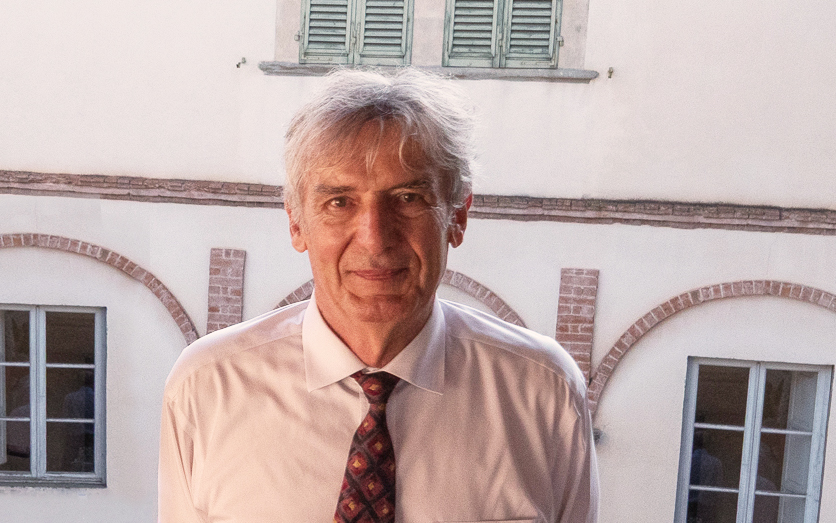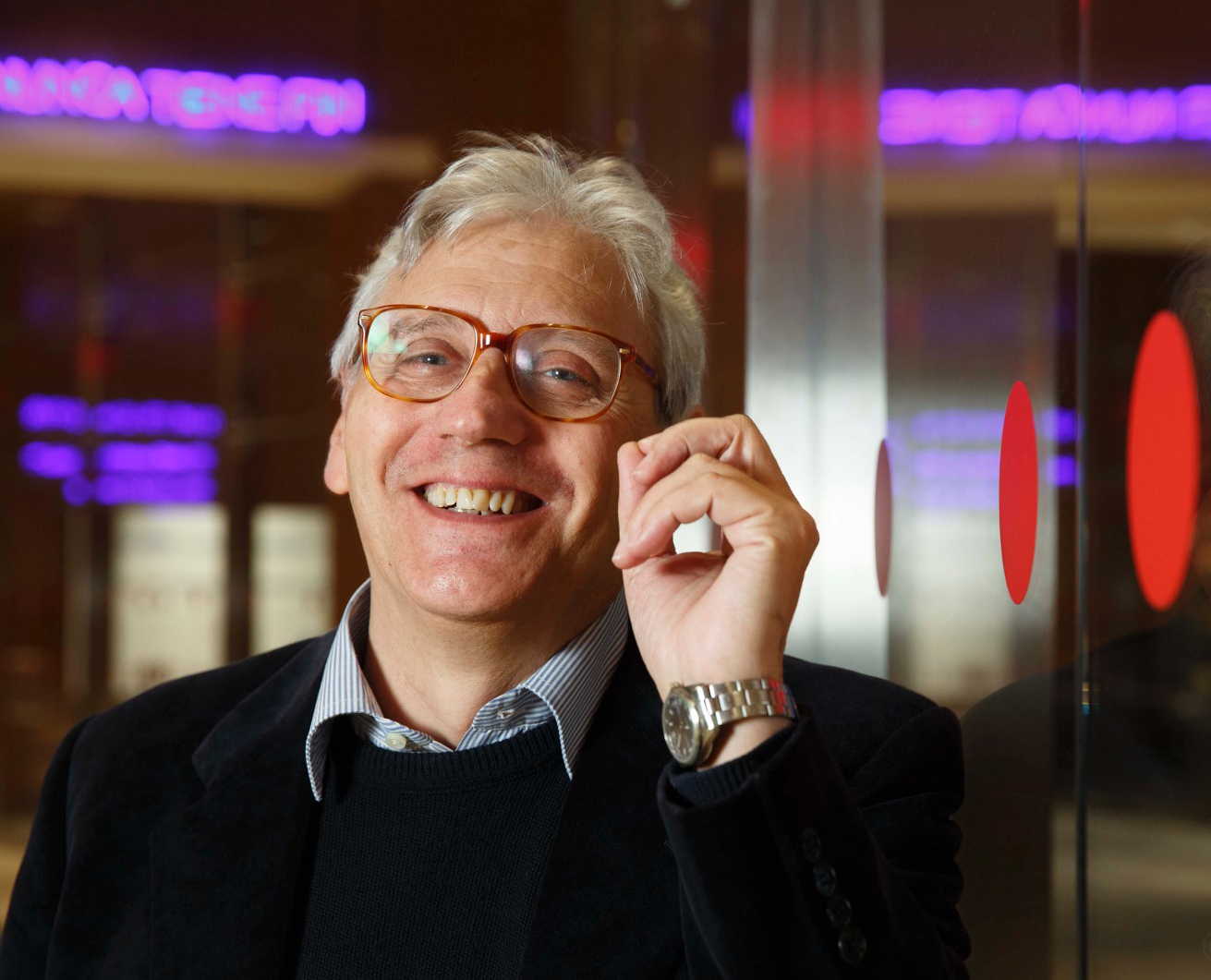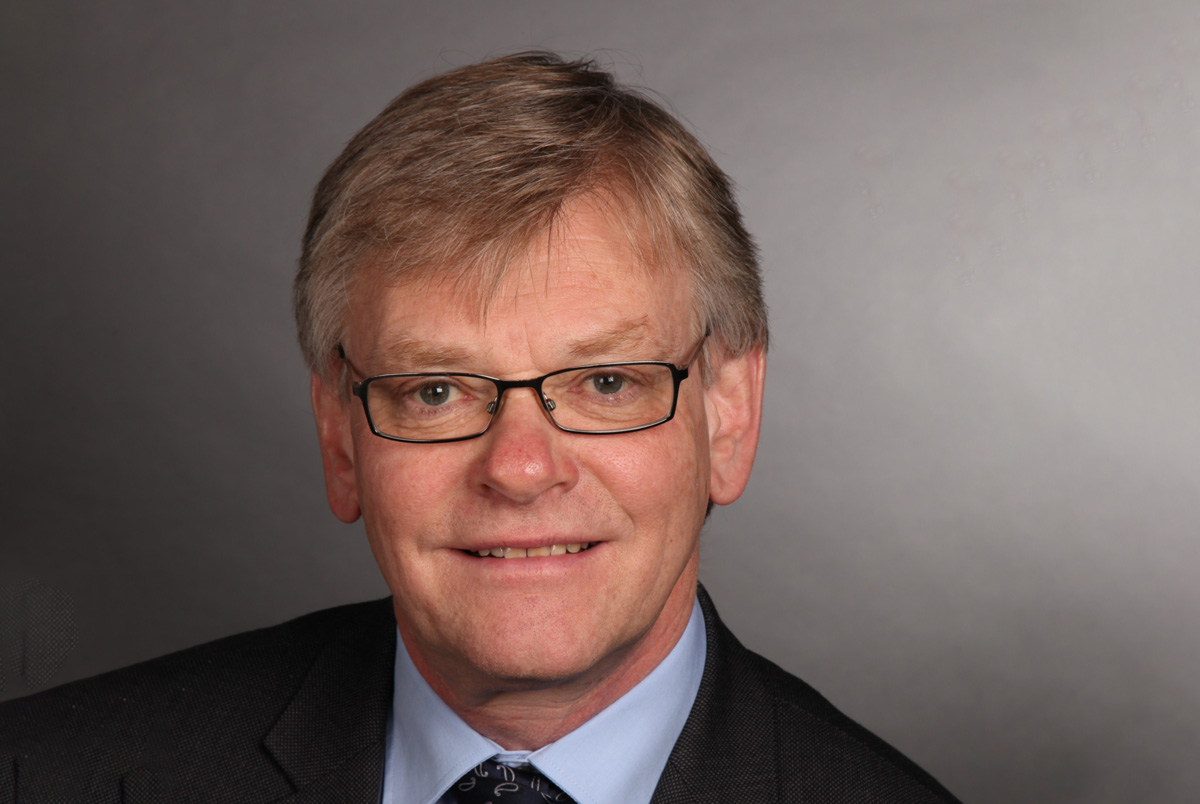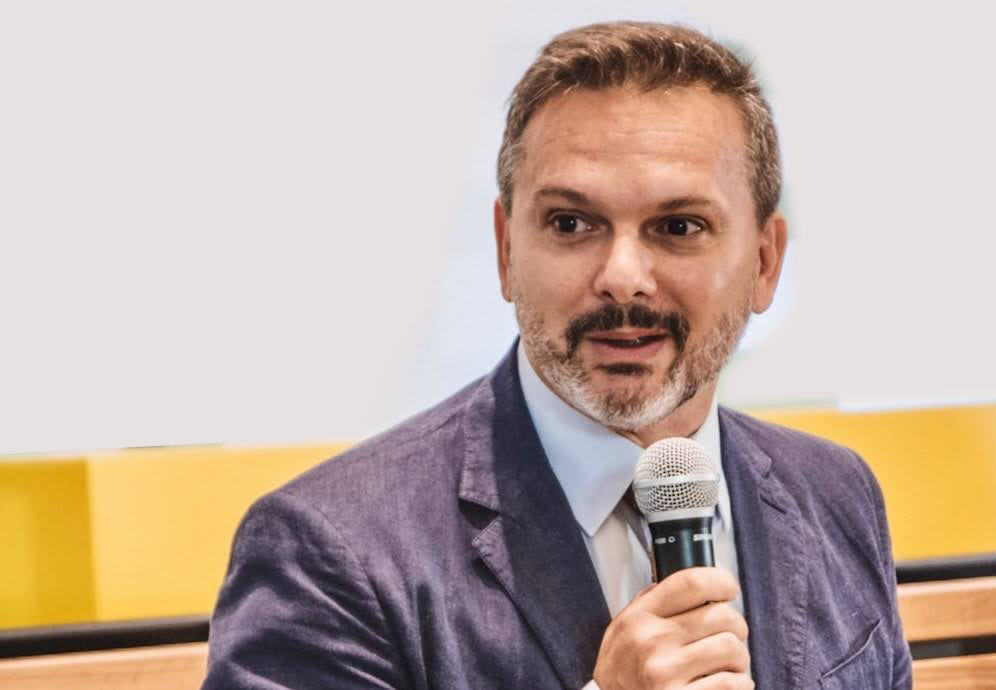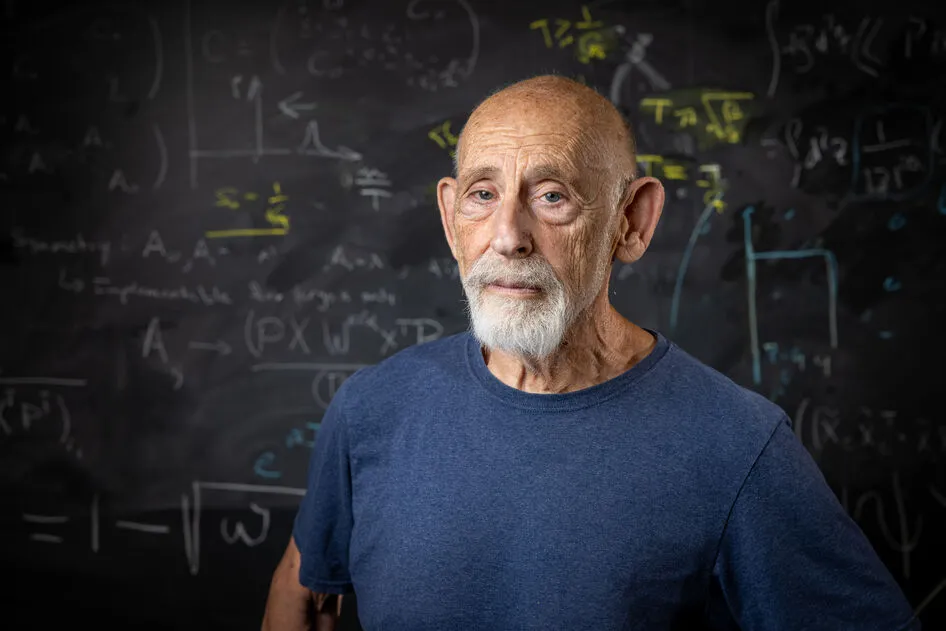WHEN RESEARCH INFN’S 2017 STARTS WITH A VIEW TO CHANGE
Interview with Fernando Ferroni, INFN President since 2011
Time of change” is the motto with which, at the Legnaro National Laboratories, Ferroni opened the INFN 2017-2019 three-year plan seminar last December. Change, already at the end of the year, marked by completion of the selection procedures for the recruitment of 73 new researchers and by approval by the government of the decree simplifying the activities of public research bodies. Of course, the scientific challenges which in the course of 2017 will engage INFN are many: from the research on gravitational waves with the Virgo interferometer, to high energy physics at CERN, which will be able to count on the outstanding performance of the LHC, as well as ongoing research at the Gran Sasso National Laboratories on dark matter and neutrinos. The high level contribution of INFN in numerous international collaborations is highlighted by the managerial roles of INFN researchers and by the coordination in the realization of vital parts of the scientific apparatuses. In addition, in the near future it will be fully launched the administrative reorganization process started in the second half of 2016 with the entry into office of the new Director General of the INFN, Bruno Quarta.
Time of change, therefore. Which of the transformations in progress will mostly affect the institute’s future?
The most important change for the year which has just begun is certainly in the implementation decree on the operation of research institutes. This guarantees us independence in general, especially in the field of personnel recruitment. As a first important step, at the end of 2016 we completed the selection procedures to hire, after years of hiring freezes, 73 new researchers, of which 58 experimental and 15 theoretical, who will bring new life to the institute’s research activities. An expectation of renewal that also depends on the type of new researchers hired: about a third of the winners come from abroad and this will undoubtedly result in an infusion of innovation and variety in the mentality and way of working, which can only enrich us. We have decided to encourage their training and growth with the award of an initial grant and we hope they will soon be able to compete individually in the assignment of European grants for research projects. As a further element of innovation, by no means secondary, the decree simplifying research institutes finally recognises the roles of researcher and technologist, as provided for by the European Charter for Researchers. This provides the due dignity to vital professional figures for the institute, aligning the methods of management of Italian research institutes with the global context, which we have been part of for years having to cope, with difficulty, with an incongruous difference in treatment.
The recent discovery of gravitational waves provides encouragement to address the major scientific challenges put in place for the coming years. Frontiers such as that on the nature of dark matter are, however, particularly difficult to overcome. Is there a clear vision of the strategy to be followed in this and other fields?
In terms of strategy, one thing certain is that when we know what to look for we find it. This is demonstrated by recent discoveries, albeit with lengthy investigations, such as those of the Higgs boson and gravitational waves. In the case of dark matter, the issue is more complex because we are not sure what we are looking for. That is why we are looking a bit in all plausible directions and the variety of experiments is justified in this context. To date, the results have only allowed to exclude some possibilities while a certain variety remains: focusing in one direction only would be a strategic mistake. For dark matter we are following three parallel roads, the results of which, however, bring complementary information: the production of dark matter particles at the LHC, their detection in space with satellite detectors such as AMS (Alpha Magnetic Spectrometer) and DAMPE (DArk Matter Particle Explorer), and soon by the Chinese space station, and detection in the underground Gran Sasso laboratories where, protected from cosmic rays, we hope to detect the rare interaction of dark matter particles with large-scale detectors. Of the latter, the experiment par excellence engaged in the search for dark matter candidates is certainly XENON, but we are also working on next-generation detectors such as DARKSide, with important repercussions, among other things, on the industrial fabric of the country such as those of the ARIA project, which realisation foresees the conversion of a mine in Sardinia.
The place of excellence for the search for dark matter, at the worldwide level, is the Gran Sasso Laboratories. In general, what will be the focus of research in the four major INFN national laboratories?
The Gran Sasso laboratories are engaged, as we said, in the detection of dark matter and as a second major focus on the study of the properties of neutrinos. Research in which the laboratory is a global excellence and attracts researchers and collaborations from all over the world. Also in the field of neutrinos, the Southern National Laboratories are now in full swing in the construction of KM3NeT, the submarine telescope for the detection of cosmic neutrinos, implemented at a depth of 3500 metres off the coast of Porto Palo di Capo Passero in Sicily, a European collaboration that also has important technological and marine environment monitoring repercussions. Also at the Southern Laboratories, upgrade is in progress of the cyclotron, the accelerator of the laboratories used to develope important experiments in nuclear physics also used for cancer protonterapy with the CATANA (Hadroterapy and advanced nuclear applications center) project. A new cyclotron was installed last year at the Legnaro laboratories for the SPES (Selective Production of Exotic Species) project, dedicated to the study of atomic nuclei produced in the late stages of stellar evolution, as well as the production of radiopharmaceuticals. The Frascati laboratories, an INFN tradition of excellence in the field of particle accelerators, are now engaged, as well as in research on the DAFNE collider, in the European EUPRAXIA (European Plasma Research Accelerator with eXcellence In Applications) project for plasma acceleration, with the SPARC (Auto-amplified Pulsed Coherent Radiation Source) free electron laser.
In addition to being the unique reference in Italy for nuclear and particle physics, INFN has a strong penetration internationally. Which are the most promising collaborations?
INFN research is mainly conducted within international collaborations. This is one of the institute’s strengths. In this context, the activity takes place along three large and well-designed highways on which we are working at full capacity: high energy physics at the LHC, detection of gravitational waves with the Virgo interferometer and the search for rare events in the Gran Sasso laboratories. INFN is also active in the multimessenger field, the part of astroparticle research which is based
on multiple cosmic messengers detection and which is now taking benefits from KM3NeT and
Virgo and the information brought, respectively, by neutrinos and by gravitational waves. We are also exploiting the recommendations that emerged from WHAT NEXT, the internal process of definition and sharing of strategies for research in the near future. In particular, INFN is activating collaborations in the cosmological field for the study of cosmic background radiation and dark energy, fields in which the institute’s skills and specific abilities can make a difference. INFN’s contribution in building new accelerators worldwide is also very significant, based on our tradition and high level of knowledge in this area. A commitment that sees us involved in projects such as ELI (European Laser Infrastructure), a new research infrastructure of pan-European interest for multidisciplinary research and applications. Thanks to INFN, moreover, Italy is one of the international partners of the European XFEL project for the construction of a Free Electron Laser synchrotron radiation source. We are providing a major contribution to the implementation of the ESS (European Spallation Source) multi-disciplinary research centre in Lund, Sweden, based on a powerful neutron source, in which we are coordinating the Italian participation in the construction of the particle accelerators. Again at the European level, for some time now we have been providing our expertise and technologies for the European Synchrotron Radiation Facility (ESRF) in Grenoble, France, for the implementation of an intense X-ray source. Our contribution to accelerator development also involves the Middle East with SESAME (Synchrotron-light for Experimental Science and Application in the Middle East), for which INFN is contributing to implementing the accelerator’s core. In Europe we have already mentioned the EUPRAXIA and KM3NeT projects, while on the other side of the Atlantic we have a long-standing collaboration with Fermilab, whose activities we currently support in particular in the neutrino field; finally, we share with China important projects on neutrinos and in space.
In the Nature Index 2016, the Nature ranking of worldwide research institutes, INFN is eleventh among more than 3700 institutes involved in physics research worldwide*. How can a similar level of performance be maintained over time?
Our researchers are excellent and this is demonstrated by the high-level posts assigned to them worldwide, where we export not only well prepared young people constituting the brain drain from Italy, but also experts covering management roles of high level. In recent years, many of our researchers have been spokespersons of experiments at CERN and this year alone there are two out of four for the large experiments or they have been appointed to the guidance of importannt international projects and foreign institutions.
Part of INFN’s excellence is also due to its organisation and ability to make wise investments. We spend no more than 50% of our budget in salaries and the remaining half is completely invested in research. We also have continuous and fruitful collaborations with the business world.
In the technology transfer field, the number of patents, spin-offs and start-ups, as well as cooperation agreements with businesses, are constantly growing. And this takes place because our researchers are not only excellent, but are becoming increasingly aware of the strong relationship between what they do and the possible external use of the technologies they develop.▪
JANUARY 2017

